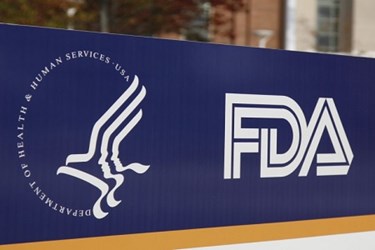Restaurant And Hospitality News – May 9, 2016

By Christine Kern, contributing writer

In news this week, the FDA released final menu labeling guidelines, and some industry groups are not satisfied; and a new study demonstrates that advanced POS Systems can optimize restaurant operations.
FDA Releases Final Menu Labeling Guidelines
The U.S. Food and Drug Administration (FDA) has published its final menu labeling guidance for the food-service industry. “A Labeling Guide for Restaurants and Retail Establishments Selling Away-From-Home Foods – Part II (Menu Labeling Requirements in Accordance with 21 CFR 101.11) is an important resource to help businesses comply with the menu labeling final rule. The draft guidance was announced in the Federal Register on September 16, 2015.
Designed to clarify previous regulations, the latest guidance is seen as the final step to implementing these regulations, according to The Nation’s Restaurant News. The enforcement of the menu labeling regulations will begin one year from the publication of the Notice of Availability (NOA) in the Federal Register, which is anticipated to occur in early May 2016.
The final guidance on menu labeling “responds to many frequently asked questions that the agency has received to date. It differs from the draft guidance by providing additional examples and new or revised questions and answers on topics such as covered establishments, alcoholic beverages, catered events, mobile vendors, grab-and-go items, and record keeping requirements,” according to the announcement. It also means that restaurants will need to move forward with menu analysis to ensure that they can meet the new regulations when implementation begins.
To help covered establishments meet the new guidelines, the FDA has committed to offering webinars and workshops dealing with menu labeling, and questions may also be submitted directly to CalorieLabeling@fda.hhs.gov.
The move is not being greeting enthusiastically by some, however. NACS counsel is concerned about the lack of compliance language in the final guidance, stating “The FDA has done a disservice to convenience stores by willingly ignoring our industry’s interest in providing calorie information to consumers in a way that is actually helpful,” explained Lyle Beckwith, NACS senior vice president of government relations at NACS. “Rather than take into account the practicality of our industry’s ability to comply with the law, the FDA has moved ahead with menu-labeling requirements designed for chains and not convenience store foodservice programs.”
Those opposed to the final guidelines have pledged their continued support of The Common Sense Nutrition Disclosure Act (H.R. 2017/S 2217), which passed in the House in February and is currently pending in the Senate. This bill would give retailers flexibility by tightening the definition of “standard menu items,” which the regulation requires to be labeled, as foods that are uniformly prepared at 20 or more locations and not foods sold at just one or two locations. The bill would also allow supermarkets to use a menu or menu board to list information, rather than labeling individual prepared food products.
New Study Demonstrates That Advanced POS Systems Optimize Restaurant Operations
Customer and employee experience is crucial for restaurateurs and retailers alike, and 93 percent of respondents believe that infusing digital capabilities into physical locations is imperative for improving customer experience, according to a new study. Revel Systems, a leading iPad Point of Sale management solution, commissioned the study, Step Up The In-Person Experience, conducted by Forrester Consulting, which investigated the current state of digital experiences for retailers and restaurateurs, their challenges, and the technological obstacles that interfered with optimal operations and customer experience.
“We commissioned Forrester Consulting to conduct this study in order to gain a deeper understanding of our clients’ daily struggles and what is holding them back from building their dream business. We build our technology to suit the specialized needs of our clients,” says Lisa Falzone, co-founder and CEO of Revel Systems.
The study surveyed 150 decision makers representing both industries who had at least 25 locations in the U..S., and found that 94 percent of retailers “see in-store digital capabilities as important not only for customer experience but also for store operations.”
Based on the findings, Forrester has concluded that “the use of an advanced point-of-service (POS) system – an evolution of the capabilities of traditional point-of-sale systems, often manifested in newer form factors and deployment models –that mimics systems of insight and systems of engagement will improve customer experience, empower employees, and increase the efficiency and performance of operations.” This is significant, since just 44 percent of restaurants on average have integrated their back-end systems with their POS, “severely restricting the functionality that frontline employees need to service customers and optimize operations.”
